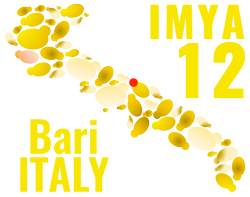

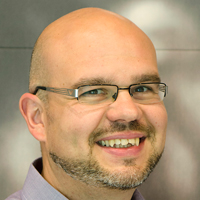
Maurizio Bettiga
Chalmers University of Technology
Gothenburg, Sweden
 Maurizio Bettiga was born in Italy and performed his graduate and post graduate studies at University of Milan-Bicocca (Milan, Italy), where he obtained his PhD in Industrial Biotechnology in 2006. After a post doctoral stay as Marie Curie Fellow at Lund University (Sweden), he joined the staff of Industrial Biotechnology at the department of Chemical and Biological Engineering, Chalmers University of Technology in Gothenburg (Sweden) as Assistant Professor.
Maurizio Bettiga was born in Italy and performed his graduate and post graduate studies at University of Milan-Bicocca (Milan, Italy), where he obtained his PhD in Industrial Biotechnology in 2006. After a post doctoral stay as Marie Curie Fellow at Lund University (Sweden), he joined the staff of Industrial Biotechnology at the department of Chemical and Biological Engineering, Chalmers University of Technology in Gothenburg (Sweden) as Assistant Professor.
His research focuses on the study and improvement of robustness of industrial microorganisms, in particular within the concept of Biorefinery for the conversion of lignocellulosic raw materials to fuels and chemicals.
He is currently leading a number of research projects on tolerance of yeast to lignocellulosic hydrolysate inhibitors including acetic acid, in addition to a project in the robustness of anaerobic microbial consortia involved in anaerobic digestion processes.
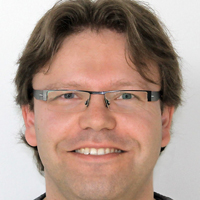
Ralf Braun
University of Bayreuth, Institute of Cell Biology
Bayreuth, Germany
 Dr. Braun graduated in Biochemistry at the University of Tübingen. For his doctoral thesis, he moved to the Institute of Human Genetics of the Helmholtz Center Munich, where he analyzed the role of the AAA-ATPase Cdc48/VCP in cell death in yeast and mammalian cells. As postdoc in the lab of Prof. Frank Madeo at the University of Graz, he established yeast models for neurodegenerative disorders. He continued his work on neurotoxic yeast models as junior group leader at the Institute of Cell Biology of the University of Bayreuth (Head: Prof. Benedikt Westermann). His work is focused on yeast models for motor neuron and Alzheimer’s diseases.
Dr. Braun graduated in Biochemistry at the University of Tübingen. For his doctoral thesis, he moved to the Institute of Human Genetics of the Helmholtz Center Munich, where he analyzed the role of the AAA-ATPase Cdc48/VCP in cell death in yeast and mammalian cells. As postdoc in the lab of Prof. Frank Madeo at the University of Graz, he established yeast models for neurodegenerative disorders. He continued his work on neurotoxic yeast models as junior group leader at the Institute of Cell Biology of the University of Bayreuth (Head: Prof. Benedikt Westermann). His work is focused on yeast models for motor neuron and Alzheimer’s diseases.
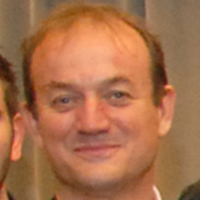
Duccio Cavalieri
Dipartimento di Biologia, Università degli Studi di Firenze
Florence, Italy
 Associate Professor Department of Biology, University of Florence. Via Madonna del Piano 6, 50019 Sesto Fiorentino, Firenze, Italy duccio.cavalieri@unifi.it, www.duccioknights.org,
Associate Professor Department of Biology, University of Florence. Via Madonna del Piano 6, 50019 Sesto Fiorentino, Firenze, Italy duccio.cavalieri@unifi.it, www.duccioknights.org,
1998: PhD in Genetics and Molecular Biology (Pavia).
1999 -2001: Postdoctoral Fellow, Harvard University.
2001-2004: Harvard Genomics Fellow, Principal Investigator, Group Leader.
2003-2011: Assistant Professor Faculty of Parmacy, Florence University.
2012-2015: Department head Department of Computational Biology. Fondazione Edmund Mach, S. Michele all’Adige (TN), Italy.
Cavalieri’s work (orcid.org/0000-0001-6426-5719) on the evolutionary systems biology of yeast, produced 115 peer reviewed papers, 15 book chapters, and one patent. Cavalieri is listed in the Top Italian Scientists (TIS) -VIA Academy, deputy Coordinator of JPI EMPADASI-EU-2015-2016 and the Italian JRU-of the European Research Infrastructure ELIXIR (ESFRI). Since 2016 Italian delegate to ICYGMB.
I Stefanini, Dapporto L, Berna L, Polsinelli M., Turillazzi S , Cavalieri D. Social wasps are a Saccharomyces mating nest. Proc Natl Acad Sci US A. 2016 Feb.
Rizzetto L, De Filippo C, Cavalieri D. Richness and diversity of mammalian fungal communities shape innate and adaptive immunity in health and disease. Eur J Immunol. 2014 Sep 25.
Rivero D, Berná L, Stefanini I, Baruffini E, Bergerat A, Csikász-Nagy A, De Filippo C, Cavalieri D. Hsp12p and PAU genes are involved in ecological interactions between natural yeast strains. Environ Microbiol. 2015.
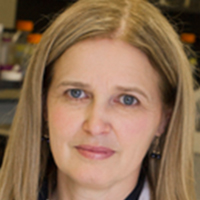
Katrina Cooper
Rowan University School of Osteopathic Medicine
Stratford, NJ, USA
 Dr. Cooper is an Associate Professor in the Department of Molecular Biology, Rowan University, School of Medicine, USA. She received her D. Phil. in Biochemistry from The University of Oxford in 1992 where she studied in the laboratory of Professor Edwin Southern. She was awarded a SERC/NATO research fellowship to support her post-doctoral studies at the Fox Chase Cancer Center, Philadelphia in the laboratory of Dr. Randy Strich. She joined the Department of Biochemistry at Drexel University Medical School, Philadelphia, in 2001 as an Assistant Professor and moved to UMDNJ (now Rowan University) in 2005. The major focus of her research group is understanding how cells decide between life or death following environmental stress. To this end, she is investigating the conserved role of cyclin C in mitochondrial dynamics and apoptosis initiation. In unstressed cells, cyclin C is a transcription factor associating with the Mediator complex of RNA polymerase II. Here, accompanied by its cyclin dependent kinase Cdk8, this duo predominantly represses a subset of stress response genes. To relieve this repression, stress-induced activation of MAPK pathway(s) triggers cyclin C, but not Cdk8, relocalization to the mitochondrial outer membrane. Here it is required for stress-induced fission by associating with the conserved mitochondrial fission apparatus. It is also required for efficient programmed cell death. Currently, her research group investigates the molecular details governing cyclin C nuclear release as well as understanding its precise role in stress-induced fission and cell death. Finally, in collaboration with her former mentor, Dr. Randy Strich, she is investigating a tumor suppressor role for cyclin C in thyroid and pancreatic cancer mouse models. She has been the recipient of many awards including NIH funding and an American Cancer Society Research Scholar Grant.
Dr. Cooper is an Associate Professor in the Department of Molecular Biology, Rowan University, School of Medicine, USA. She received her D. Phil. in Biochemistry from The University of Oxford in 1992 where she studied in the laboratory of Professor Edwin Southern. She was awarded a SERC/NATO research fellowship to support her post-doctoral studies at the Fox Chase Cancer Center, Philadelphia in the laboratory of Dr. Randy Strich. She joined the Department of Biochemistry at Drexel University Medical School, Philadelphia, in 2001 as an Assistant Professor and moved to UMDNJ (now Rowan University) in 2005. The major focus of her research group is understanding how cells decide between life or death following environmental stress. To this end, she is investigating the conserved role of cyclin C in mitochondrial dynamics and apoptosis initiation. In unstressed cells, cyclin C is a transcription factor associating with the Mediator complex of RNA polymerase II. Here, accompanied by its cyclin dependent kinase Cdk8, this duo predominantly represses a subset of stress response genes. To relieve this repression, stress-induced activation of MAPK pathway(s) triggers cyclin C, but not Cdk8, relocalization to the mitochondrial outer membrane. Here it is required for stress-induced fission by associating with the conserved mitochondrial fission apparatus. It is also required for efficient programmed cell death. Currently, her research group investigates the molecular details governing cyclin C nuclear release as well as understanding its precise role in stress-induced fission and cell death. Finally, in collaboration with her former mentor, Dr. Randy Strich, she is investigating a tumor suppressor role for cyclin C in thyroid and pancreatic cancer mouse models. She has been the recipient of many awards including NIH funding and an American Cancer Society Research Scholar Grant.
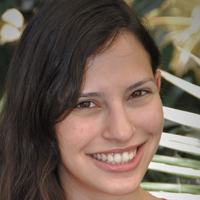
Michal Eisenberg-Bord
Dept of Molecular Genetics, The Weizmann Institute of Science
Rehovot, Israel
 Michal Eisenberg-Bord was born in Israel and performed her undergraduate studies at the Hebrew University, Faculty of Agriculture campus in Rehovot. She then moved to perform her graduate studies at the lab of Maya Schuldiner at the Weizmann Institute of Science. Michal has been awarded an Azrieli Scholars fellowship for outstanding PhD students and has already contributed several key findings in the field of contact sites. Michal’s research focuses on organelle communication using systematic genetic approaches in the yeast Saccharomyces cerevisiae. In this yeast she has discovered the first contact site regulator, Lam6. Her current work focuses on an unexplored, three-way, contact site formed between Lipid Droplets and the Vacuole as well as the ER.
Michal Eisenberg-Bord was born in Israel and performed her undergraduate studies at the Hebrew University, Faculty of Agriculture campus in Rehovot. She then moved to perform her graduate studies at the lab of Maya Schuldiner at the Weizmann Institute of Science. Michal has been awarded an Azrieli Scholars fellowship for outstanding PhD students and has already contributed several key findings in the field of contact sites. Michal’s research focuses on organelle communication using systematic genetic approaches in the yeast Saccharomyces cerevisiae. In this yeast she has discovered the first contact site regulator, Lam6. Her current work focuses on an unexplored, three-way, contact site formed between Lipid Droplets and the Vacuole as well as the ER.
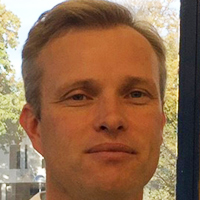
Campbell Gourlay
University of Kent
Canterbury, United Kingdom
 Campbell Gourlay began his career at The John Innes Centre in 1996 where he studied the genetic control of leaf development. Following this he began to work with budding yeast as a model eukaryote in the lab of Kathryn Ayscough, where he investigated the role of actin in the process of endocytosis. During this time he discovered a link between actin, the regulation of mitochondrial function and the control of ageing and apoptosis. This led to his involvement in the emerging field of yeast apoptosis, which has popularised the novel concept that unicellular organisms possess the ability to undergo programmed cell death as an altruistic act for the betterment of a population. In 2006 he was awarded a five year MRC Career Development Fellowship to establish his own lab within the Kent Fungal Group at the University of Kent where is now a senior lecturer in cell biology. The Gourlay lab maintains a strong interest in the role that actin plays in the control of homeostatic mechanisms that contribute to healthy ageing. The lab also uses yeast as a model eukaryote to study a number of aspects of human disease. The group has also diversified to apply its understanding of yeast stress signalling processes and death to the fields of fungal pathogenesis and drug resistance.
Campbell Gourlay began his career at The John Innes Centre in 1996 where he studied the genetic control of leaf development. Following this he began to work with budding yeast as a model eukaryote in the lab of Kathryn Ayscough, where he investigated the role of actin in the process of endocytosis. During this time he discovered a link between actin, the regulation of mitochondrial function and the control of ageing and apoptosis. This led to his involvement in the emerging field of yeast apoptosis, which has popularised the novel concept that unicellular organisms possess the ability to undergo programmed cell death as an altruistic act for the betterment of a population. In 2006 he was awarded a five year MRC Career Development Fellowship to establish his own lab within the Kent Fungal Group at the University of Kent where is now a senior lecturer in cell biology. The Gourlay lab maintains a strong interest in the role that actin plays in the control of homeostatic mechanisms that contribute to healthy ageing. The lab also uses yeast as a model eukaryote to study a number of aspects of human disease. The group has also diversified to apply its understanding of yeast stress signalling processes and death to the fields of fungal pathogenesis and drug resistance.
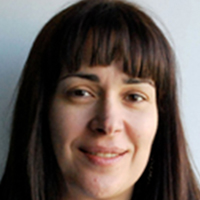
Paula Ludovico
University of Minho
Braga, Portugal
 Paula graduated in Biology at the University of Porto (1994) and did her Master thesis on Molecular Genetics at the University of Minho (1999). In 2002 concluded her PhD in Biological Sciences at University of Minho. Paula was a visiting scientist at the Department of Biological Sciences, Columbia University, New York, USA and at the Department of Neurology, Miami University, Florida, USA. Since 2002, Paula is an Associate Professor at School of Medicine and a Principal Investigator at the Health and Life Sciences Research Institute (ICVS), School of Medicine, University of Minho. Paula was a pioneer on the study of programmed cell death in yeast and fungi and was one of the organizers of the 1st and the 11th International Meeting on Yeast Apoptosis. She has developed work in studying the mechanisms of programmed cell death in yeast and their link with autophagy and aging. Paula Ludovico is author or co-author of more than 56 publications in international Journals, 5 book chapters and participated as oral presenter/poster presenter in more than 50 International meetings related with the field. She has also been acting as referee for more than 20 international journals.
Paula graduated in Biology at the University of Porto (1994) and did her Master thesis on Molecular Genetics at the University of Minho (1999). In 2002 concluded her PhD in Biological Sciences at University of Minho. Paula was a visiting scientist at the Department of Biological Sciences, Columbia University, New York, USA and at the Department of Neurology, Miami University, Florida, USA. Since 2002, Paula is an Associate Professor at School of Medicine and a Principal Investigator at the Health and Life Sciences Research Institute (ICVS), School of Medicine, University of Minho. Paula was a pioneer on the study of programmed cell death in yeast and fungi and was one of the organizers of the 1st and the 11th International Meeting on Yeast Apoptosis. She has developed work in studying the mechanisms of programmed cell death in yeast and their link with autophagy and aging. Paula Ludovico is author or co-author of more than 56 publications in international Journals, 5 book chapters and participated as oral presenter/poster presenter in more than 50 International meetings related with the field. She has also been acting as referee for more than 20 international journals.
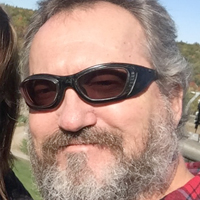
Lynn Megeney
University of Ottawa
Ottawa, QC, Canada
 Lynn Megeney is a Senior Scientist at the Sprott Centre for Stem Cell Research, at the Ottawa Hospital Research Institute, and he also holds academic appointments as Professor in the Dept. of Medicine (Division of Cardiology) and the Dept. of Cellular and Molecular Medicine at the University of Ottawa. Research from the Megeney group has had global impact in an area of basic cellular biology. Specifically, his group discovered that cell death or cell suicide pathways play vital roles in normal biologic processes such as stem cell differentiation and proteostasis. More recently, studies from the Megeney lab have shown that these same apoptotic proteins and pathways act as potent regulatory or mitigating factors in human disease. His laboratory is supported by provincial, national and international funding agencies and he has been the recipient of numerous awards and honors including the Mach Gaennslen Chair in Cardiac Research from 2005 to 2011 and an International Fellowship from the Chinese Academy of Sciences. In addition to his academic work, he maintains a keen interest in translational science and commercialization efforts, serving as a scientific founder of three biotechnology companies.
Lynn Megeney is a Senior Scientist at the Sprott Centre for Stem Cell Research, at the Ottawa Hospital Research Institute, and he also holds academic appointments as Professor in the Dept. of Medicine (Division of Cardiology) and the Dept. of Cellular and Molecular Medicine at the University of Ottawa. Research from the Megeney group has had global impact in an area of basic cellular biology. Specifically, his group discovered that cell death or cell suicide pathways play vital roles in normal biologic processes such as stem cell differentiation and proteostasis. More recently, studies from the Megeney lab have shown that these same apoptotic proteins and pathways act as potent regulatory or mitigating factors in human disease. His laboratory is supported by provincial, national and international funding agencies and he has been the recipient of numerous awards and honors including the Mach Gaennslen Chair in Cardiac Research from 2005 to 2011 and an International Fellowship from the Chinese Academy of Sciences. In addition to his academic work, he maintains a keen interest in translational science and commercialization efforts, serving as a scientific founder of three biotechnology companies.
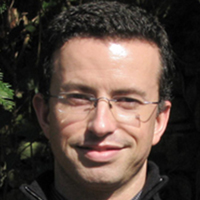
Tiago Outeiro
University Medical Center Goettingen
Göttingen, Germany
 Prof. Tiago Outeiro graduated in Biochemistry at the University of Porto and was an Erasmus student at the University of Leeds in the UK. Prof. Outeiro did his PhD thesis at the Whitehead Institute for Biomedical research – MIT and worked as a Research Scientist at FoldRx Pharmaceuticals as a Research Scientist and Consultant. Prof. Outeiro was a Postdoctoral Research Fellow in the Department of Neurology of the Massachusetts General Hospital – Harvard Medical School where he focused on the study of Neurodegenerative disorders such as Parkinson’s and Alzheimer’s disease. Prof. Outeiro directed the Cell and Molecular Neuroscience Unit at IMM, Lisbon, from 2007 to 2014, and is currently Full Professor and the Director of the Department of Neurodegeneration and Neurorestoration at the University Medical Center Goettingen, in Germany. Prof. Outeiro has authored >130 research articles in international journals and participates in various international collaborative projects with the aim of identifying the molecular basis of neurodegenerative disorders such as Alzheimer’s and Parkinson’s disease.
Prof. Tiago Outeiro graduated in Biochemistry at the University of Porto and was an Erasmus student at the University of Leeds in the UK. Prof. Outeiro did his PhD thesis at the Whitehead Institute for Biomedical research – MIT and worked as a Research Scientist at FoldRx Pharmaceuticals as a Research Scientist and Consultant. Prof. Outeiro was a Postdoctoral Research Fellow in the Department of Neurology of the Massachusetts General Hospital – Harvard Medical School where he focused on the study of Neurodegenerative disorders such as Parkinson’s and Alzheimer’s disease. Prof. Outeiro directed the Cell and Molecular Neuroscience Unit at IMM, Lisbon, from 2007 to 2014, and is currently Full Professor and the Director of the Department of Neurodegeneration and Neurorestoration at the University Medical Center Goettingen, in Germany. Prof. Outeiro has authored >130 research articles in international journals and participates in various international collaborative projects with the aim of identifying the molecular basis of neurodegenerative disorders such as Alzheimer’s and Parkinson’s disease.
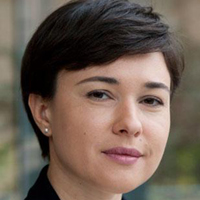
Dina Petranovic
Chalmers University of Technology
Gothenburg, Sweden
 Dina Petranovic has a background in molecular biology from Zagreb University (1994-1999, Croatia), PhD in molecular microbiology from Paris University XI (2000-2004, France), two postdocs from Danish Technical University (2004-2007, Denmark) in microbial genetics and microbial biotechnology and sabbatical from Lindquist Lab at MIT (2012, USA). Dina has been an assistant (2008-2012) and then associate professor (since 2012) at Chalmers University of Technology, in Göteborg, Sweden.
Dina Petranovic has a background in molecular biology from Zagreb University (1994-1999, Croatia), PhD in molecular microbiology from Paris University XI (2000-2004, France), two postdocs from Danish Technical University (2004-2007, Denmark) in microbial genetics and microbial biotechnology and sabbatical from Lindquist Lab at MIT (2012, USA). Dina has been an assistant (2008-2012) and then associate professor (since 2012) at Chalmers University of Technology, in Göteborg, Sweden.
Dina used to work with G+ bacteria and signal transduction mediated by phosphorelay (PTS) and protein-phosphorylation. Since 2007 she has been focusing on yeast Saccharomyces cerevisiae and how to use it to study proteostasis management. Her interest is to figure out how and why expression of some proteins that are not inherently toxic can damage the cell, and what is the fate of the cell in such circumstances. The proteins that she is interested in can have different origin and applications, for example she uses a fungal industrial enzyme (α-amylase) to study how secreting a large protein induces stress in the secretory pathway and how that influences the cell stress responses and eventually cell fate. She also uses other proteins, for example human insulin precursor, human globin proteins (hemoglobin, myoglobin, neuroglobin), human amyloid-β peptide (involved in Alzheimer’s disease) and human mutant ubiquitin. This approach is helping to learn about the fundamental roles of these proteins in vivo, the cell stress responses and additionally find engineering targets to use the yeast cell as a factory for production of proteins.
In her work Dina uses molecular and cell biology tools and approaches, microscopy, physiological characterizations, omics analyses, modeling and bioinformatics.
For more information please visit www.sysbio.se .
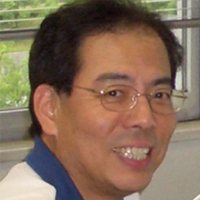
Hiroshi Takagi
Nara Institute of Science and Technology
Nara, Japan
 Hiroshi Takagi was awarded the degrees of M.Sc. in immunology at Nagoya University in 1982. After his graduation, he worked at Ajinomoto Co, Inc. as a research scientist from 1982 to 1995. During the time, he studied at State University of New York at Stony Brook under Prof. Masayori Inouye in 1986 and received his Ph.D. degree at the University of Tokyo under Prof. Takahisha Ohta in 1988 for protein engineering of the Bacillus subtilis subtilisin E. He promoted to Chief Biochemist for protein engineering of microbial enzymes for industrial use and development of frozen dough. In 1995, Dr. Takagi left Ajinomoto and was appointed Associate Professor at Fukui Prefectural University. He then started his major fundamental research on novel stress-tolerant mechanisms of yeast, focusing on amino acid metabolism and ubiquitin system, and their applications to industrial yeast breeding. He promoted to full Professor in 2001 and moved to Nara Institute of Science and Technology (NAIST) ten years ago (2006). The Takagi lab is involved in Applied Molecular Microbiology including yeast big projects and the bacterial cysteine/sulfur metabolism. http://bsw3.naist.jp/takagi/English.htm
Hiroshi Takagi was awarded the degrees of M.Sc. in immunology at Nagoya University in 1982. After his graduation, he worked at Ajinomoto Co, Inc. as a research scientist from 1982 to 1995. During the time, he studied at State University of New York at Stony Brook under Prof. Masayori Inouye in 1986 and received his Ph.D. degree at the University of Tokyo under Prof. Takahisha Ohta in 1988 for protein engineering of the Bacillus subtilis subtilisin E. He promoted to Chief Biochemist for protein engineering of microbial enzymes for industrial use and development of frozen dough. In 1995, Dr. Takagi left Ajinomoto and was appointed Associate Professor at Fukui Prefectural University. He then started his major fundamental research on novel stress-tolerant mechanisms of yeast, focusing on amino acid metabolism and ubiquitin system, and their applications to industrial yeast breeding. He promoted to full Professor in 2001 and moved to Nara Institute of Science and Technology (NAIST) ten years ago (2006). The Takagi lab is involved in Applied Molecular Microbiology including yeast big projects and the bacterial cysteine/sulfur metabolism. http://bsw3.naist.jp/takagi/English.htm

Joris Winderickx
KU Leuven Functional Biology
Leuven, Belgium
 Joris Winderickx obtained his degree Master of Science in Biology at the Katholieke Universiteit Leuven (KU Leuven, Belgium) in 1984 and a PhD in Sciences at the same university in 1990. He then went as a Senior Fellow to the University of Washington, Seattle for a Post-Doc at the Dept of Genetics (Prof. S. Deeb) and the Dept of Human Genetics (Prof. A. Motulsky). At the end of 1992 he returned to the KU Leuven is now full professor at the Dept. of Biology at the KU Leuven, Belgium, and head of the research group Functional Biology (http://www.kuleuven.be/bio/funbio). He is an expert in molecular cell biology and genetics and is internationally known for his research on signal transduction in yeast and the use of humanized yeast models for medical applications, as further illustrated by an outstanding publication record in high-ranked international journals. His research is embedded in a well-established network of national and international collaborations with academia, biotech and pharmaceutical companies.
Joris Winderickx also co-founded the KU Leuven spin-offs reMYND, that focusses on drug discovery (http://www.remynd.com), and ADx NeuroSciences, a company dedicated to biomarker identification and diagnostics (http://www.adxneurosciences.com). Since August 2014, Joris Winderickx is heading the Biology Department of KU Leuven.
Joris Winderickx obtained his degree Master of Science in Biology at the Katholieke Universiteit Leuven (KU Leuven, Belgium) in 1984 and a PhD in Sciences at the same university in 1990. He then went as a Senior Fellow to the University of Washington, Seattle for a Post-Doc at the Dept of Genetics (Prof. S. Deeb) and the Dept of Human Genetics (Prof. A. Motulsky). At the end of 1992 he returned to the KU Leuven is now full professor at the Dept. of Biology at the KU Leuven, Belgium, and head of the research group Functional Biology (http://www.kuleuven.be/bio/funbio). He is an expert in molecular cell biology and genetics and is internationally known for his research on signal transduction in yeast and the use of humanized yeast models for medical applications, as further illustrated by an outstanding publication record in high-ranked international journals. His research is embedded in a well-established network of national and international collaborations with academia, biotech and pharmaceutical companies.
Joris Winderickx also co-founded the KU Leuven spin-offs reMYND, that focusses on drug discovery (http://www.remynd.com), and ADx NeuroSciences, a company dedicated to biomarker identification and diagnostics (http://www.adxneurosciences.com). Since August 2014, Joris Winderickx is heading the Biology Department of KU Leuven.
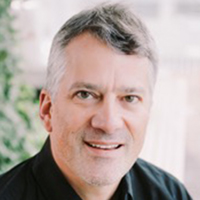
Charles Boone
University of Toronto
Toronto, ON, Canada
 Dr. Boone is Professor at the University of Toronto's Donnelly Centre and the Department of Molecular Genetics. His research is centered on the development and application of functional genomics approaches. In particular, applying an automated form of yeast genetics, he is investigating the general structure and topology of genetic interaction networks. Recently, Dr. Boone’s group generated a global synthetic genetic interaction map for yeast cells, testing most of the possible 18 million pairs of genes for genetic interactions. This global genetic network reveals a hierarchical model of cellular function, clustering genes and pathways into numerous different biological processes, and grouping bioprocesses into functional compartments. The global genetic network defines gene function, but it also provides a key for interpreting chemical-genetic profiles, linking bioactive compounds to their target pathways.
Dr. Boone is Professor at the University of Toronto's Donnelly Centre and the Department of Molecular Genetics. His research is centered on the development and application of functional genomics approaches. In particular, applying an automated form of yeast genetics, he is investigating the general structure and topology of genetic interaction networks. Recently, Dr. Boone’s group generated a global synthetic genetic interaction map for yeast cells, testing most of the possible 18 million pairs of genes for genetic interactions. This global genetic network reveals a hierarchical model of cellular function, clustering genes and pathways into numerous different biological processes, and grouping bioprocesses into functional compartments. The global genetic network defines gene function, but it also provides a key for interpreting chemical-genetic profiles, linking bioactive compounds to their target pathways.
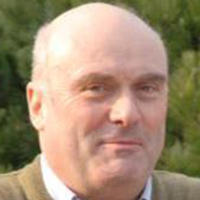
Carlo Bruschi
Dept Cell Biology and Physiology, Univ. of Salzburg
Salzburg, Austria
 Prof. Bruschi obtained his degree in Medical Biology from the University of Parma in 1976, specialized in Human Cytogenetics at the University of Rome in 1977-78 and obtained a NIH Postdoctoral Fellowship at the Biomedical Division, Lawrence Berkeley Laboratory, University of California, Berkeley, from 1981 to 1983. Afterwards, he gained a tenure-track position at the School of Medicine of the University of North Carolina, Greenville, NC, where he was tenured and promoted to Associate Professor in 1988. The following year he returned to Italy as Senior Scientist to lead the Microbiology Group of the new International Centre for Genetic Engineering and Biotechnology (ICGEB), an international research organization initially part of UNIDO. From 1985 to 1996 he has been a P.I. and Co-P.I. on NASA Space Biology research program, performing two experiments in space, on the Space Shuttle in 1992 and 1994. He has collaborated intensively with the biotech and pharma industry conducting several applied research projects and served as Italian Regional AREA Science Park representative for Biotechnology to the European Union Biopole program in 1991-92. His Mirobiology laboratory was part of several European Union scientific projects like the Yeast Genome Sequencing, in FrameWork Program III and IV, EUROFAN in FWP IV, SABAF in Concerted Action 1994, Bacillus subtilis Genome Sequencing in CA 1996-99 and Leishmania EULEISH Genome Sequencing in CA 1999-2001. He was the co-founder of BEST, a space bioengineering company, Scientific Director of two AREA Science Park and ICGEB spin-off companies and of the Italian National Research Project on Advanced Biotechnologies II from 1999 -2003. He has been a Visiting Professor of Microbiology at the University of Trieste teaching Clinical Microbiology at the School of Medicine. His major research interest is in the area of genome stability and recombination, in particular chromosome dynamics. His group was the first to construct a specific chromosome KO system and a bridge-induced translocation (BIT) system in yeast. Throughout his career, both in the USA and Italy, he has secured more than 5 Million dollars in research grants and published more than 80 scientific papers in international journals. He serves on the Editorial Board of several scientific journals, is currently international Expert Reviewer for NASA’s Postdoctoral Program as well as for Russia Science Foundation and is the inventor on three biotechnology patents. Prof. Bruschi retired from ICGEB on January 1st, 2015 to become a current Visiting Professor of Genetics of the Cell Biology Department of the University of Salzburg, Austria where he teaches a regular course in Epigenomics.
Prof. Bruschi obtained his degree in Medical Biology from the University of Parma in 1976, specialized in Human Cytogenetics at the University of Rome in 1977-78 and obtained a NIH Postdoctoral Fellowship at the Biomedical Division, Lawrence Berkeley Laboratory, University of California, Berkeley, from 1981 to 1983. Afterwards, he gained a tenure-track position at the School of Medicine of the University of North Carolina, Greenville, NC, where he was tenured and promoted to Associate Professor in 1988. The following year he returned to Italy as Senior Scientist to lead the Microbiology Group of the new International Centre for Genetic Engineering and Biotechnology (ICGEB), an international research organization initially part of UNIDO. From 1985 to 1996 he has been a P.I. and Co-P.I. on NASA Space Biology research program, performing two experiments in space, on the Space Shuttle in 1992 and 1994. He has collaborated intensively with the biotech and pharma industry conducting several applied research projects and served as Italian Regional AREA Science Park representative for Biotechnology to the European Union Biopole program in 1991-92. His Mirobiology laboratory was part of several European Union scientific projects like the Yeast Genome Sequencing, in FrameWork Program III and IV, EUROFAN in FWP IV, SABAF in Concerted Action 1994, Bacillus subtilis Genome Sequencing in CA 1996-99 and Leishmania EULEISH Genome Sequencing in CA 1999-2001. He was the co-founder of BEST, a space bioengineering company, Scientific Director of two AREA Science Park and ICGEB spin-off companies and of the Italian National Research Project on Advanced Biotechnologies II from 1999 -2003. He has been a Visiting Professor of Microbiology at the University of Trieste teaching Clinical Microbiology at the School of Medicine. His major research interest is in the area of genome stability and recombination, in particular chromosome dynamics. His group was the first to construct a specific chromosome KO system and a bridge-induced translocation (BIT) system in yeast. Throughout his career, both in the USA and Italy, he has secured more than 5 Million dollars in research grants and published more than 80 scientific papers in international journals. He serves on the Editorial Board of several scientific journals, is currently international Expert Reviewer for NASA’s Postdoctoral Program as well as for Russia Science Foundation and is the inventor on three biotechnology patents. Prof. Bruschi retired from ICGEB on January 1st, 2015 to become a current Visiting Professor of Genetics of the Cell Biology Department of the University of Salzburg, Austria where he teaches a regular course in Epigenomics.
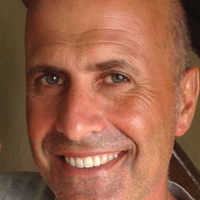
Francesco Cecconi
Danish Cancer Society Research Center
Copenhagen, Denmark
 Francesco Cecconi is Full Professor of Developmental Biology at the University of Rome Tor Vergata, Unit Head at the Danish Cancer Society Research Center in Copenhagen, Denmark and member of the European Molecular Biology Organization (EMBO).
Francesco Cecconi is Full Professor of Developmental Biology at the University of Rome Tor Vergata, Unit Head at the Danish Cancer Society Research Center in Copenhagen, Denmark and member of the European Molecular Biology Organization (EMBO).
As a Max-Planck-Institute researcher (MPI of Biophysical Chemistry, Göttingen, Germany) in the field of developmental cell death, he has described the function in vivo of Apaf1 (1997), a master regulator of mitochondria-dependent apoptosis. In 1999, he was awarded a Telethon Scientist position, and since then he is the Head of the Molecular Embryology Lab at the Department of Biology, University of Tor Vergata, Rome, Italy. After his seminal work on the pro-autophagy molecule Ambra1 (2007), he became a world-leader in the field of autophagy, while producing in parallel key papers on the role played by apoptotic molecules in synaptic degeneration.
He is author of more than 150 publications in peer-reviewed journals, including Nature, Cell, and Nature Cell Biology. In recent years, he has developed a strong expertise in the role played by autophagy in cancer and his team is dissecting the regulatory network of this process by multidisciplinary approaches.

Manuela Côrte-Real
University of Minho
Braga, Portugal
 Manuela Côrte-Real is a full professor at the Department of Biology, University of Minho, where she has been since 1992. She is also an investigator of the Centre of Molecular and Environmental Biology, Braga. Her research has been focused on the elucidation of apoptotic mechanisms and signalling pathways, namely those involving mitochondria membrane permeabilization and the release of apoptogenic factors, as well as the crosstalk between the mitochondria and the vacuole. Her group found for the first time the release of cytochrome c and the involvement of a mitochondrial mediated pathway in yeast wild-type cells independent of the heterologous expression of Bax. This finding, as well as the organization of the 1st International Meeting on Yeast Apoptosis in Braga, which gathered several researchers that started working on this topic, were relevant contributions to the emergence of the field of yeast apoptosis. Her Lab has also begun studies with mammalian cell lines and corroborated several of her major findings obtained with yeast cells, reinforcing this simple model system as a powerful tool in cell death research. In particular, the lysosomal protease Cathepsin D was shown to play a similar role in acetate-induced apoptosis in colorectal cancer cells as its orthologue Pep4p in acetic acid-induced apoptosis in yeast cells. More recently, and in collaboration with researchers from national and international institutions, she has been using yeast as an in vivo system for functional and molecular studies of individual mammalian apoptotic regulators.
Manuela Côrte-Real is a full professor at the Department of Biology, University of Minho, where she has been since 1992. She is also an investigator of the Centre of Molecular and Environmental Biology, Braga. Her research has been focused on the elucidation of apoptotic mechanisms and signalling pathways, namely those involving mitochondria membrane permeabilization and the release of apoptogenic factors, as well as the crosstalk between the mitochondria and the vacuole. Her group found for the first time the release of cytochrome c and the involvement of a mitochondrial mediated pathway in yeast wild-type cells independent of the heterologous expression of Bax. This finding, as well as the organization of the 1st International Meeting on Yeast Apoptosis in Braga, which gathered several researchers that started working on this topic, were relevant contributions to the emergence of the field of yeast apoptosis. Her Lab has also begun studies with mammalian cell lines and corroborated several of her major findings obtained with yeast cells, reinforcing this simple model system as a powerful tool in cell death research. In particular, the lysosomal protease Cathepsin D was shown to play a similar role in acetate-induced apoptosis in colorectal cancer cells as its orthologue Pep4p in acetic acid-induced apoptosis in yeast cells. More recently, and in collaboration with researchers from national and international institutions, she has been using yeast as an in vivo system for functional and molecular studies of individual mammalian apoptotic regulators.
Her global aim is to continue elucidating the regulatory network controlling regulated cell death in living organisms, and ultimately uncover attractive molecular targets for the development of novel therapeutics for Human pathologies associated with cell death dysfunctions, and cancer in particular.

Ali Gargouri
University of Sfax
Sfax, Tunisia
 Ali Gargouri is a group leader at the Center of Biotechnology of Sfax-Tunisia. In 1989 he obtained his « Doctorat d’Etat » from the University of Paris VI-France for a thesis work performed at the CNRS of Gif-sur-Yvette. During this stay, he worked on yeast mitochondrial introns, informational suppression and particularly on the reversion of mitochondrial mutations by intron retro-deletion, under the supervision of Pr Piotr Slonimski. Since 1989, he returned in Tunisia to lead a group working mainly, at that time, on fungal cellulases and the bioconversion of lignocellulosic materials into glucose to be converted in valuable by-products. They extended their activities to other hydrolytic fungal enzymes, such as pectinases, xylanases, lipases and proteases. Besides that, a sub-group of the laboratory is involved in another different field, dealing with cancer genetics and heterologous expression in yeast. They carried out several molecular studies on cancer patients searching for polymorphisms, mutations and epigenetic variations, including methylation status and miRNA expression. They have expressed the HBS (Hepatitis B Surface antigen), LMP1 (Latent Membrane Protein of Epstein Barr virus) and p53 gene in yeast and discovered that when over expressed, the p53 human gene triggers yeast apoptosis.
Ali Gargouri is a group leader at the Center of Biotechnology of Sfax-Tunisia. In 1989 he obtained his « Doctorat d’Etat » from the University of Paris VI-France for a thesis work performed at the CNRS of Gif-sur-Yvette. During this stay, he worked on yeast mitochondrial introns, informational suppression and particularly on the reversion of mitochondrial mutations by intron retro-deletion, under the supervision of Pr Piotr Slonimski. Since 1989, he returned in Tunisia to lead a group working mainly, at that time, on fungal cellulases and the bioconversion of lignocellulosic materials into glucose to be converted in valuable by-products. They extended their activities to other hydrolytic fungal enzymes, such as pectinases, xylanases, lipases and proteases. Besides that, a sub-group of the laboratory is involved in another different field, dealing with cancer genetics and heterologous expression in yeast. They carried out several molecular studies on cancer patients searching for polymorphisms, mutations and epigenetic variations, including methylation status and miRNA expression. They have expressed the HBS (Hepatitis B Surface antigen), LMP1 (Latent Membrane Protein of Epstein Barr virus) and p53 gene in yeast and discovered that when over expressed, the p53 human gene triggers yeast apoptosis.
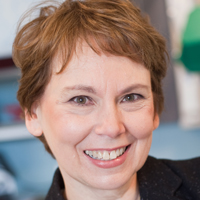
Marie Hardwick
Johns Hopkins Bloomberg School of Public Health
Baltimore, MD, USA
 J. Marie Hardwick, PhD, is the David Bodian Professor in the Department of Molecular Microbiology & Immunology at the Johns Hopkins University Bloomberg School of Public Health, and holds joint appointments in the Departments of Biochemistry & Molecular Biology, Pharmacology & Molecular Sciences, Neurology, and Oncology, in the Johns Hopkins School of Medicine. Her research laboratory is best known for uncovering new functions of apoptotic cell death regulators that also alter disease pathogenesis. Her research group uses multiple model systems, including mammals, flies, yeast and viruses to determine the molecular details that govern life-death events: the activation of cell death in the epileptic brain, the failure of cancer cells to die, the apoptotic versus non-death functions of BCL-2 family proteins and caspase proteases, and the signals responsible for converting the pro-survival function of a protein into its pro-apoptotic function in a timely manner. Current projects include: non-apoptotic functions of caspases in the brain; novel membrane functions of apoptosis regulators of the BCL-2 protein family; gene mutation-driven genome evolution in yeast and in cancer cell survival, evolutionarily conserved nutrient-sensing pathways that control cell growth, autophagy defects in neurodegeneration, novel functions for new epilepsy genes, and the identification of yeast genes that can be unleashed to promote fungal cell death. Her research seeks to translate basic science knowledge to enhance the value of science to society, through discovery, education and innovation.
J. Marie Hardwick, PhD, is the David Bodian Professor in the Department of Molecular Microbiology & Immunology at the Johns Hopkins University Bloomberg School of Public Health, and holds joint appointments in the Departments of Biochemistry & Molecular Biology, Pharmacology & Molecular Sciences, Neurology, and Oncology, in the Johns Hopkins School of Medicine. Her research laboratory is best known for uncovering new functions of apoptotic cell death regulators that also alter disease pathogenesis. Her research group uses multiple model systems, including mammals, flies, yeast and viruses to determine the molecular details that govern life-death events: the activation of cell death in the epileptic brain, the failure of cancer cells to die, the apoptotic versus non-death functions of BCL-2 family proteins and caspase proteases, and the signals responsible for converting the pro-survival function of a protein into its pro-apoptotic function in a timely manner. Current projects include: non-apoptotic functions of caspases in the brain; novel membrane functions of apoptosis regulators of the BCL-2 protein family; gene mutation-driven genome evolution in yeast and in cancer cell survival, evolutionarily conserved nutrient-sensing pathways that control cell growth, autophagy defects in neurodegeneration, novel functions for new epilepsy genes, and the identification of yeast genes that can be unleashed to promote fungal cell death. Her research seeks to translate basic science knowledge to enhance the value of science to society, through discovery, education and innovation.
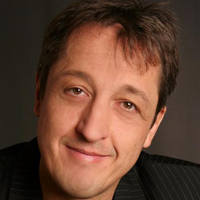
Frank Madeo
University of Graz
Graz, Austria
 Frank Madeo graduated in Tuebingen, Germany and is currently Professor for Molecular Biosciences at the University of Graz. He discovered and initiated the field of Programmed cell death in yeast and developed most of the techniques for its detection. He and his group has a long standing experience in phenotyping and molecular characterization of distinct causal metabolites of aging and longevity that are conserved across species. He discovered the role of spermidine in autophagy induction, cell protection and longevity.
Frank Madeo graduated in Tuebingen, Germany and is currently Professor for Molecular Biosciences at the University of Graz. He discovered and initiated the field of Programmed cell death in yeast and developed most of the techniques for its detection. He and his group has a long standing experience in phenotyping and molecular characterization of distinct causal metabolites of aging and longevity that are conserved across species. He discovered the role of spermidine in autophagy induction, cell protection and longevity.

Jens Nielsen
Chalmers University of Technology
Gothenburg, Sweden
 Jens Nielsen has an MSc degree in Chemical Engineering and a PhD degree (1989) in Biochemical Engineering from the Danish Technical University (DTU), and after that established his independent research group and was appointed full Professor there in 1998. He was Fulbright visiting professor at MIT in 1995-1996. At DTU he founded and directed Center for Microbial Biotechnology. In 2008 he was recruited as Professor and Director to Chalmers University of Technology, Sweden, where he is currently directing a research group of more than 50 people. At Chalmers he established the Area of Advance Life Science Engineering, a cross departmental strategic research initiative and was founding Head of the Department of Biology and Biological Engineering, which now encompass more than 170 people. Jens Nielsen has published so far more than 550 papers that have been cited more than 35,000 times (current H-factor 92), and co-authored more than 40 books. He is inventor of more than 50 patents and he has founded several biotech companies. He has received numerous Danish and international awards including the Nature Mentor Award, and is member of several academies, including the National Academy of Engineering in USA, the Royal Swedish Academy of Science, the Royal Danish Academy of Science and Letters, the Royal Swedish Academy of Engineering Sciences and the American Academy of Microbiology. He is a founding president of the International Metabolic Engineering Society.
Jens Nielsen has an MSc degree in Chemical Engineering and a PhD degree (1989) in Biochemical Engineering from the Danish Technical University (DTU), and after that established his independent research group and was appointed full Professor there in 1998. He was Fulbright visiting professor at MIT in 1995-1996. At DTU he founded and directed Center for Microbial Biotechnology. In 2008 he was recruited as Professor and Director to Chalmers University of Technology, Sweden, where he is currently directing a research group of more than 50 people. At Chalmers he established the Area of Advance Life Science Engineering, a cross departmental strategic research initiative and was founding Head of the Department of Biology and Biological Engineering, which now encompass more than 170 people. Jens Nielsen has published so far more than 550 papers that have been cited more than 35,000 times (current H-factor 92), and co-authored more than 40 books. He is inventor of more than 50 patents and he has founded several biotech companies. He has received numerous Danish and international awards including the Nature Mentor Award, and is member of several academies, including the National Academy of Engineering in USA, the Royal Swedish Academy of Science, the Royal Danish Academy of Science and Letters, the Royal Swedish Academy of Engineering Sciences and the American Academy of Microbiology. He is a founding president of the International Metabolic Engineering Society.
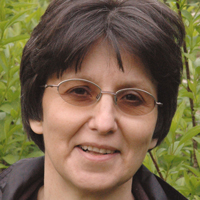
Zdena Palková
Charles University in Prague
Prague, Czech Republic
 Zdena Palkova is Professor and Group Leader at the Faculty of Science, Charles University in Prague, Czech Republic. ZP’s “Yeast Colony Group” studies molecular and cellular mechanisms that are involved in formation, differentiation and ageing of colonies of yeast coming from different environments. Current research is focused on i) function and regulation of processes involved in development of specialized colonial cells similar to cells of solid tumors of mammals; ii) differentiation of cells forming structured biofilm colonies of natural yeast strains; iii) regulations of processes involved in resistance of yeast biofilm colonies and biofilms against environmental attack (including drug treatment) and iv) development of new approaches to study multicellular structures.
Zdena Palkova is Professor and Group Leader at the Faculty of Science, Charles University in Prague, Czech Republic. ZP’s “Yeast Colony Group” studies molecular and cellular mechanisms that are involved in formation, differentiation and ageing of colonies of yeast coming from different environments. Current research is focused on i) function and regulation of processes involved in development of specialized colonial cells similar to cells of solid tumors of mammals; ii) differentiation of cells forming structured biofilm colonies of natural yeast strains; iii) regulations of processes involved in resistance of yeast biofilm colonies and biofilms against environmental attack (including drug treatment) and iv) development of new approaches to study multicellular structures.
Web page
Bibliography
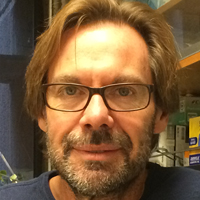
Ted Powers
University of California
Davis, CA, USA
 Ted Powers received his PhD from the University of California at Santa Cruz in 1992, where he
studied the structure and function of the ribosome with Professor Harry F. Noller. He then
carried out postdoctoral studies at the University of California at San Francisco with Professor
Peter Walter, where he examined the mechanism of protein targeting to biological membranes.
During this time, he became interested in the regulation of cell growth in eukaryotic cells, in
particular the role of the rapamycin-sensitive TOR signaling network. He carried these interests
with him to the University of California at Davis, where he has been a faculty member since
1999. He is presently a Professor in the Department of Molecular and Cellular Biology in the
College of Biological Sciences. His present research is aimed at understanding the architecture
and scope of the TOR network in regulating cellular responses to intracellular as well as
environmental cues, including conditions of stress.
Ted Powers received his PhD from the University of California at Santa Cruz in 1992, where he
studied the structure and function of the ribosome with Professor Harry F. Noller. He then
carried out postdoctoral studies at the University of California at San Francisco with Professor
Peter Walter, where he examined the mechanism of protein targeting to biological membranes.
During this time, he became interested in the regulation of cell growth in eukaryotic cells, in
particular the role of the rapamycin-sensitive TOR signaling network. He carried these interests
with him to the University of California at Davis, where he has been a faculty member since
1999. He is presently a Professor in the Department of Molecular and Cellular Biology in the
College of Biological Sciences. His present research is aimed at understanding the architecture
and scope of the TOR network in regulating cellular responses to intracellular as well as
environmental cues, including conditions of stress.
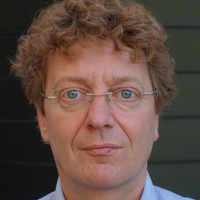
Benedikt Westermann
Zellbiologie und Elektronenmikroskopie, Universität Bayreuth
Bayreuth, Germany
 Benedikt Westermann obtained his doctoral degree in 1996 in the group of Walter Neupert at the University of Munich. After postdoctoral research in the lab of James E. Rothman at the Sloan-Kettering Institute in New York he returned to Munich to establish his own group working on mitochondrial dynamics in yeast. Since 2003 he is Professor of Cell Biology at the University of Bayreuth in Germany. His research focuses on fusion, fission, inheritance, and ultrastructure of mitochondria using state-of-the-art genetic methods, light and electron microscopy, and budding yeast as a major model organism. In several genome-wide screens his research group uncovered the genes that regulate mitochondrial distribution and morphology, inheritance of mitochondrial DNA, and mitophagy. Current projects analyze the molecular machinery orchestrating asymmetric inheritance of mitochondria in yeast and its role in aging and cell death.
Benedikt Westermann obtained his doctoral degree in 1996 in the group of Walter Neupert at the University of Munich. After postdoctoral research in the lab of James E. Rothman at the Sloan-Kettering Institute in New York he returned to Munich to establish his own group working on mitochondrial dynamics in yeast. Since 2003 he is Professor of Cell Biology at the University of Bayreuth in Germany. His research focuses on fusion, fission, inheritance, and ultrastructure of mitochondria using state-of-the-art genetic methods, light and electron microscopy, and budding yeast as a major model organism. In several genome-wide screens his research group uncovered the genes that regulate mitochondrial distribution and morphology, inheritance of mitochondrial DNA, and mitophagy. Current projects analyze the molecular machinery orchestrating asymmetric inheritance of mitochondria in yeast and its role in aging and cell death.

Richard Y. Zhao
University of Maryland Medical Center
Baltimore, MD, USA
 I am currently a Professor of Pathology, Microbiology-Immunology and Human Virology, and a Division Head of Molecular Pathology at the University of Maryland School of Medicine, Baltimore, Maryland, USA. My basic science research interest is in the area of host-pathogen interactions specifically to study the effects of viral infections on host innate cellular responses. I use a unique approach in my research by combining the tools of molecular biology, fission yeast genetics, mammalian biology and virology into a single theme. Studies supported with such a distinctive combination of tools often give rise to unique perspectives of scientific findings that are otherwise difficult to obtain based solely on a single approach or organism. The adaptation of this special research approach was rooted from my scientific training and working experiences. I was initially trained in molecular biology and microbial genetics at Oregon State University. My postdoctoral training was in molecular biology and fission yeast genetics at Columbia University College of Physicians and Surgeons. I started my own independent research laboratory in 1994 at Northwestern University Feinberg School of Medicine where I came up the idea of using fission yeast as a model to study human immunodeficiency virus type 1 (HIV-1). Because of my scientific achievements, I was awarded with an endowed research Chair as the Bernard L. Mirkin PhD/MD Research Scholar at the Children’s Memorial Institute of Education and Research, Northwestern University Feinberg School of Medicine. Through these research efforts, I have built extensive experiences and a strong track record of scientific achievements in the described scientific areas with a total of greater than 120 peer-reviewed publications. I have been invited to serve on many scientific journal editorial boards including Cell Research, Cell and Biosciences, Frontiers in Virology, Microbial Cell, PLoS One and Retrovirology. In addition, I have been invited to review scientific grant applications for funding agencies of over 10 different countries and have chaired or served on a number of NIH grant review study panels or sections. I have been invited to give scientific and clinical lectures world-wide.
I am currently a Professor of Pathology, Microbiology-Immunology and Human Virology, and a Division Head of Molecular Pathology at the University of Maryland School of Medicine, Baltimore, Maryland, USA. My basic science research interest is in the area of host-pathogen interactions specifically to study the effects of viral infections on host innate cellular responses. I use a unique approach in my research by combining the tools of molecular biology, fission yeast genetics, mammalian biology and virology into a single theme. Studies supported with such a distinctive combination of tools often give rise to unique perspectives of scientific findings that are otherwise difficult to obtain based solely on a single approach or organism. The adaptation of this special research approach was rooted from my scientific training and working experiences. I was initially trained in molecular biology and microbial genetics at Oregon State University. My postdoctoral training was in molecular biology and fission yeast genetics at Columbia University College of Physicians and Surgeons. I started my own independent research laboratory in 1994 at Northwestern University Feinberg School of Medicine where I came up the idea of using fission yeast as a model to study human immunodeficiency virus type 1 (HIV-1). Because of my scientific achievements, I was awarded with an endowed research Chair as the Bernard L. Mirkin PhD/MD Research Scholar at the Children’s Memorial Institute of Education and Research, Northwestern University Feinberg School of Medicine. Through these research efforts, I have built extensive experiences and a strong track record of scientific achievements in the described scientific areas with a total of greater than 120 peer-reviewed publications. I have been invited to serve on many scientific journal editorial boards including Cell Research, Cell and Biosciences, Frontiers in Virology, Microbial Cell, PLoS One and Retrovirology. In addition, I have been invited to review scientific grant applications for funding agencies of over 10 different countries and have chaired or served on a number of NIH grant review study panels or sections. I have been invited to give scientific and clinical lectures world-wide.